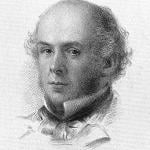
One of the most perplexing passages in the entire Bible is one that may come up around Mothers Day. In 1 Timothy 2, Paul gives theological reasons for a church’s only having male teaching pastors. Regardless of how you interpret Paul or approach this particular issue in the local church, you probably have been stumped at least once by how Paul concludes his argument. Here’s the passage in context:
Let a woman learn quietly with all submissiveness. 12 I do not permit a woman to teach or to exercise authority over a man; rather, she is to remain quiet. 13 For Adam was formed first, then Eve; 14 and Adam was not deceived, but the woman was deceived and became a transgressor. 15 Yet she will be saved through childbearing—if they continue in faith and love and holiness, with self-control. (ESV)
Here’s the thing: You don’t need to have a particular view of the role of women in teaching ministry to be confused by this passage. John Piper’s views on that theological issue are well-known and I would align myself closely with his interpretation of verses 11-14. However, Piper’s explanation of verse 15 is, I think, quite plausible and helpful no matter whether you agree or disagree with the interpretation surrounding the preceding verses.
Piper cites an English theologian from the mid-19th century named Henry Alford. Piper quotes Alford’s observation that the Greek wording of this passage is somewhat obscured by its English translation (though the translation of the ESV is accurate enough). To be saved through something, Alford notes, is not the same at all as to be saved “by” something, but can mean instead being safely brought through a trial. In that understanding, verse 15 promises that “the woman” will be safely delivered through a dangers of childbearing.
Piper:
Alford draws our attention to the fact that in Genesis 3:16, after the Fall, when God was appointing the devil and woman and man to their distinctive experiences of the curse, “bearing children” was the very point where God’s curse lands on the woman. “To the woman he said, ‘I will surely multiply your pain in childbearing; in pain you shall bring forth children.’”
Pause and feel the weight of this for women in the centuries before modern medicine. No hygiene, no spinal blocks, no episiotomies, no sutures, no caesarians, no antibiotics, no pain killers, and often, no recovery. Untold numbers of women died in childbirth and countless more suffered the rest of their lives from wounds that prevented childbirth, or any kind of normal sexual life.
In other words, even more than today, there were aspects of childbearing that felt like a curse from God — and often that burden lasted a lifetime, not just in the moment of birth. How easy it would have been for women to despair and feel that God was against them. He was their curser, not their savior.
So the salvation offered through childbearing is a direct reference to the particular aspect of God’s judgment in Genesis 3 on the creative order. Just as in the Fall the man was judged by the curse on the work of his hands, so the woman is judged by the curse on her childbearing. Paul, in 1 Timothy, is dealing not just with a singular issue of personal sanctification but with a cosmic reality of redemption history.
Piper then quotes Alford: “Just as that man should be saved through, as passing through, fire which is his trial, his hindrance in his way, in spite of which he escapes — so she shall be saved, through, as passing through, her child-bearing, which is her trial, her curse, her (not means of salvation, but) hindrance in the way of it”
So the curse is manifested in a flesh-and-blood way differently for men and women. For men, the curse is directed primarily at his relationship to the created world and his mandate to cultivate the earth. This relationship and this task is frustrated by the resistance of a cursed world to the man’s creative work, which is what creates the “futility” of work (the need to constantly do again what was previously done). For women, the curse is directed primarily at her relationship with her offspring and her mandate to “fill the earth” with faithful bearers of God’s image. The pain of childbirth is a realization of the curse and the evidence that the creative order now resists fulfillment of God’s commission of fruitfulness.
So the promise of verse 15 is that Jesus Christ is the end of the law and the reversal of the curse for all who believe. Rather than the futility of work or the pain of childbearing’s being the ultimate reality for sinful humans (and therefore communicating that there’s no real hope of redemption), Christ has borne the full weight of the cosmic curse and now imparts to us membership in His kingdom, where the effects of the curse have begun to fade and will one day disappear completely. The particular hardships of each sex are made redemptive by the same thing. There are not two gospels, one for women and one for men. Both are grafted into the redemption from the curse through faith in Jesus.
















